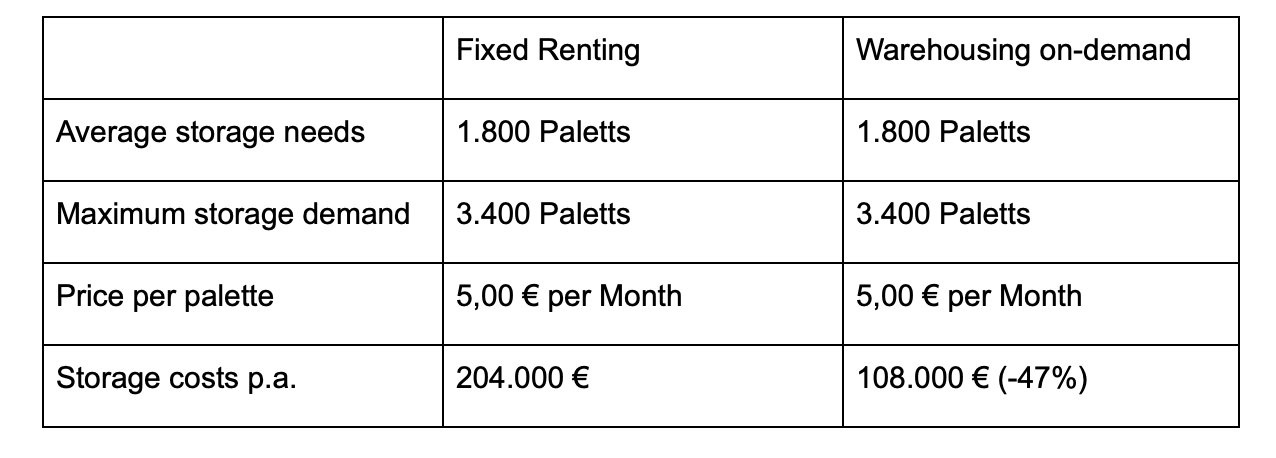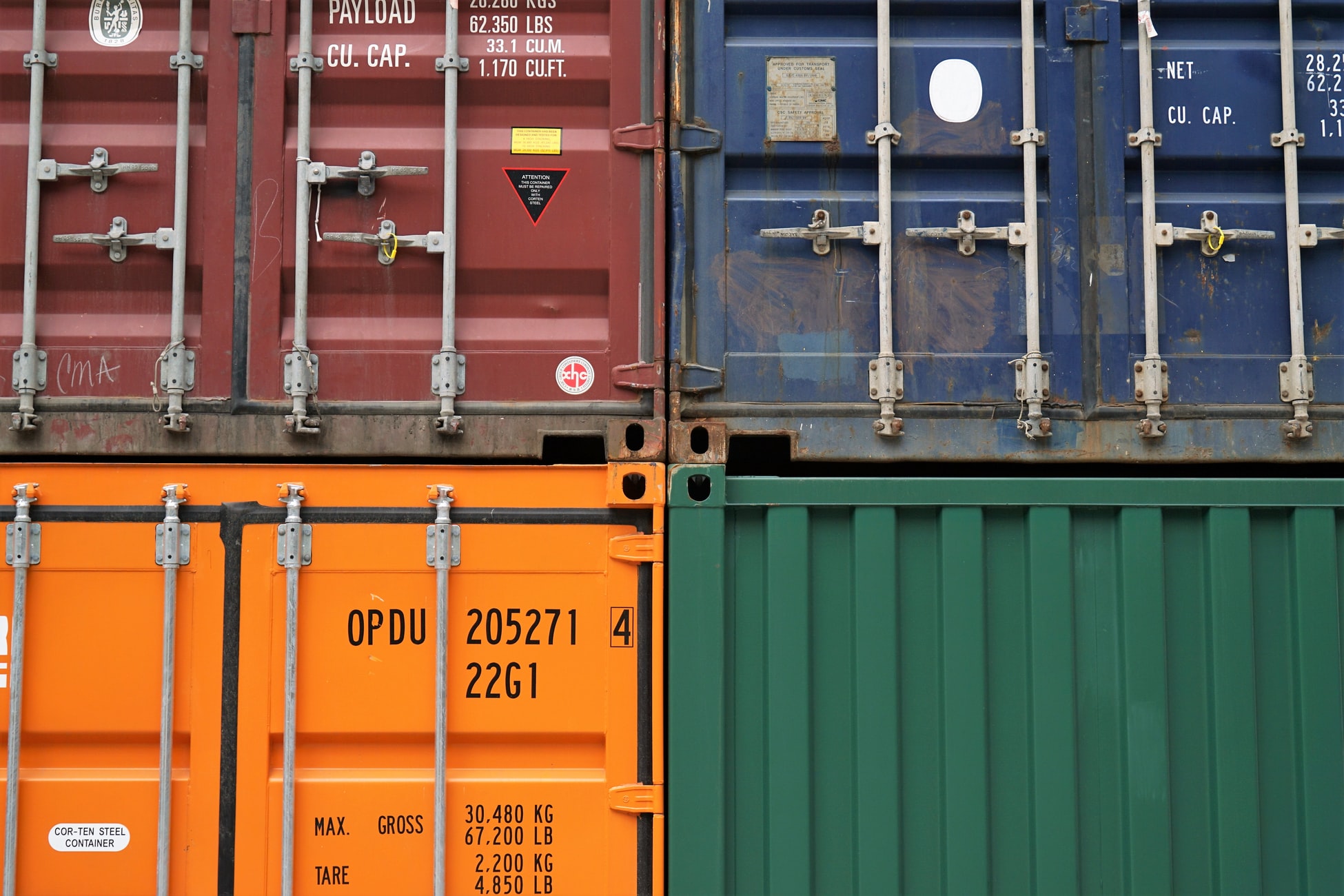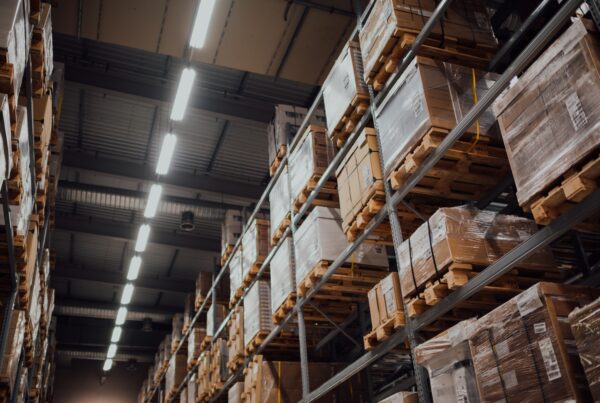On-demand platforms such as Uber showed a major impact on the transport industry - and other similar business models have now been established. The trend towards on-demand is increasing and is spreading to new industries. Warehousing on demand is another example.
Warehousing on Demand offers the possibility to store goods flexibly and manage them digitally. This allows companies with free storage capacities and companies with flexible storage needs to be brought together and benefit from both sides - entirely without long-term commitments or high fixed costs. Modern IT infrastructures and dashboards as well as detailed reporting make this model particularly attractive.
The tasks are mainly in three areas:
- Inventory Overflow: Release of unused warehouse space to other companies that have fluctuating warehouse requirements - a win-win situation for both sides.
- eCommerce Fulfillment: The boom in eCommerce continues to grow rapidly. The business model makes it particularly important to be able to scale quickly. Warehousing on-demand can improve delivery times and allow for testing new markets and more adaptive market strategies.
- Retail Distribution: Retailers who mainly sell to retail partners can reduce storage costs, shorten last mile transport routes and integrate different IT systems in a uniform way.
Warum auf Warehousing on Demand umsteigen?
A very important difference of Warehousing on Demand compared to conventional warehousing is that only the services that are actually used are paid for - according to the motto "you only pay what you use". Warehousing1 has summarised other important factors:
Flexibility: Do your storage needs fluctuate greatly throughout the year? The traditional rental of storage space requires high fixed costs and a long-term commitment to a rental contract. Warehousing on Demand, on the other hand, enables precisely these storage capacities without cost-intensive obligations. The flexibility here shows itself in several dimensions: Short-term changes in demand or corporate strategy can be implemented quickly and thus stimulate corporate growth. In addition, there is no dependence on a fixed warehouse partner at any time, but access to a flexible network is made possible. This network with numerous warehouse providers provides a large selection of warehouse locations that can be requested at any time - it does not matter whether 200 or 20,000 pallets are involved.
For many companies, especially in e-commerce, flexibility is a key factor for business success. Seasonal dependencies, forecasting problems for goods orders and piece picking are major challenges they face and require adaptable behaviour.
A further advantage increased by flexibility is the high reactivity. Storage locations can be expanded or reduced within a very short time - normally this can only be realised within a time horizon of months or even years. In the case of seasonal fluctuations, warehousing on demand is particularly advantageous because the storage capacity is quickly available but can also be reduced again just as quickly.
Cost efficiency: No minimum purchases or fixed contracts make warehousing on demand cost-saving and extremely benefit-efficient. The savings potential can be illustrated by a very simple calculation as an example:

Example of a cost calculation of Warehousing on Demand in comparison
While normal warehouse providers work with rigid pricing models that force you to rent your maximum capacity throughout the year, extreme cost savings can be achieved with flexible billing on demand.
Sustainability and environmental protection is a significant issue for the logistics and transport industry. Even if the Corona crisis is currently pushing this aspect somewhat into the background, it is triggering extensive changes in the way goods are transported and stored. Warehousing on demand is conducive to climate-friendly action, as transport routes can be shortened through closer locations and Co2 emissions can be reduced sustainably accordingly. In 2018 42,9% of CO2 emissions were caused by motorised road traffic, and the trend is still rising. Warehousing on demand can become a key factor in significantly reducing these emissions.
Less risks: Especially in times of crisis, regular fixed costs such as long-term rental costs for unused storage space are wasted expenditure. The monthly termination of storage space and performance-based billing also reduces the financial risk enormously. Financial resources do not then have to be spent uselessly and give freedom for other investments or even expansion into new markets.
Digitalization: One of the most important drivers in the logistics industry is the digital transformation. This not only affects the optimization of the supply chain - warehouse management also benefits. Poor documentation or outdated systems, as can still be seen in many logistics companies today, are an extreme obstacle to progress. Warehousing on-demand provides digital integration at the locations to create more transparency - and real-time monitoring for supply chains.
In addition to the many advantages of warehousing on-demand such as flexibility and high responsiveness, cost savings and freedom from risk as well as the efficient use of digitalisation, it should be noted that this is still a very young industry category. This initially requires a leap of faith on the part of the companies. The implementation of warehousing on demand can also lead to complications due to a lack of IT infrastructure on the part of the customer. Transparent and open communication from the beginning can help to overcome these challenges.
A look into the future
Demand-driven warehousing is an important development in the logistics industry, as it enables companies to compensate for efficiency losses and make the supply chain more sustainable and digital. This is because while traditional logistics companies aim to control the supply of transport and storage space, on-demand-platforms on the customers and thus offer more benefit-efficient alternatives. Digital transformation enables opportunities such as real-time monitoring along supply chains and detailed reporting for customers. The steady growth of e-commerce in particular is ideally suited to warehousing on demand, which is why it is a significant opportunity trend .
Warehousing1 is one of Europe's leading warehousing on demand providers. Warehousing1 relies extensively on digitalisation, for example through the use of AI-supported software that can identify the ideal service provider from a network of over 500 warehouse locations, as well as through the use of an extensive dashboard to be able to overview data flows and enable fully comprehensive system integrations. Feel free to arrange an initial meeting today to discuss your options.



